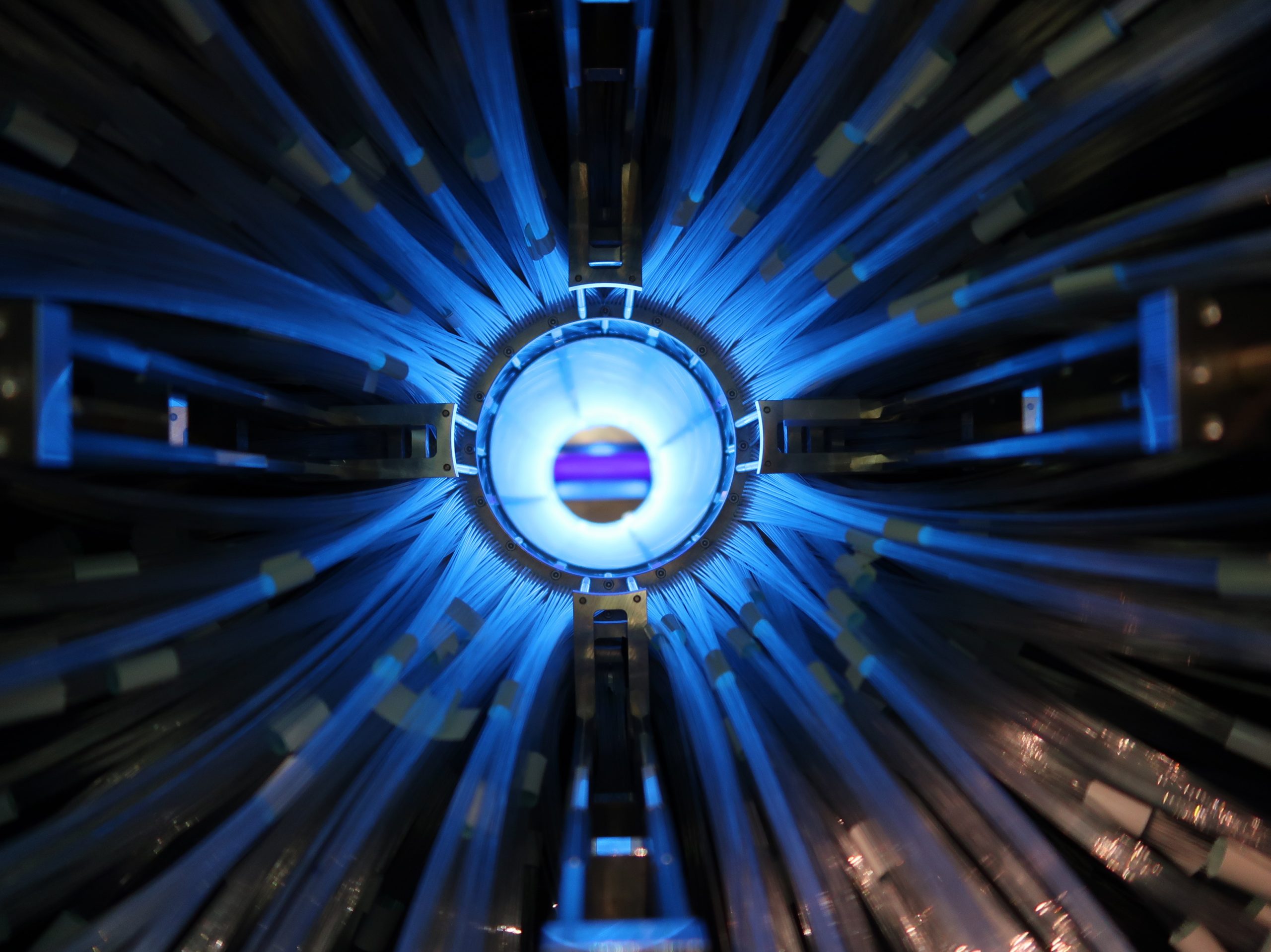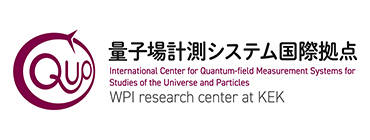- Topics
Belle II passes an Exciting Milestone with the Successful Installation of a New Vertex Detector
October 31st, 2023
-
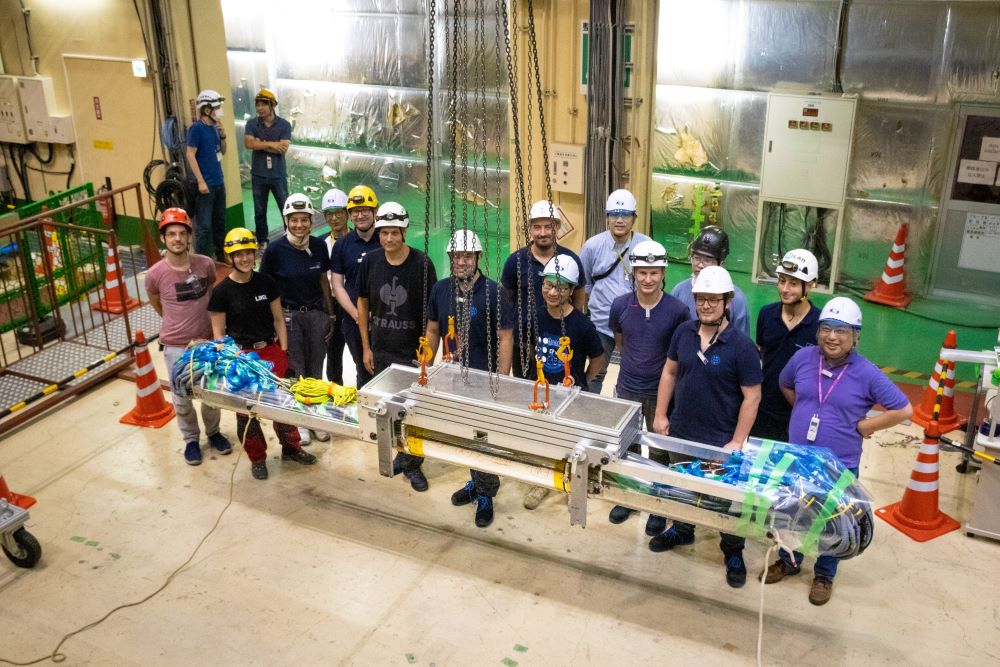
©Belle II Collaboration
A new Vertex Detector, incorporating a new fully-implemented pixel detector together with the silicon strip detector already operational since 2019, has been installed in the Belle II detector.
The Belle II Experiment is a particle physics experiment that searches for new physical phenomena in order to increase our understanding of the mechanisms involved in the creation of the universe. These searches are undertaken by studying the properties of particles, such as B mesons, generated in collisions of the electron and positron beams provided by the SuperKEKB accelerator. The decay products of these particles are then detected using the Belle II detector. Precise measurement of particle decays can allow us to discover the effects of the new particles and forces that could appear as quantum fluctuations in the decays. Such discoveries would be expected to enhance our knowledge of the mysteries that cannot be fully explained by the Standard Model of particle physics, such as the violation of particle-antiparticle symmetry that occurred in the very early universe.
A fully implemented Pixel Detector
The vertex detector measures the decay position (the decay vertex) of short-lived particles, such as B mesons, produced in the electron-positron collisions that occur inside the Belle II detector. This position is determined by finding the intersection of the measured trajectories of the particles produced from the decay. The Vertex Detector (VXD) consists of two inner layers of the silicon PiXel Detector (PXD) and four outer layers of the silicon strip detector, named Silicon Vertex Detector (SVD), installed very close to the point where collisions occur. For Belle II’s first data taking period, Run1, while the complete silicon strip detector was already operated, the second layer of the pixel detector was not fully instrumented. Installing the new vertex detector, we have now replaced the pixel layers with a new pixel detector with a fully implemented second layer. This will allow us to maintain the stable and high detector performance even given the increase in the beam-induced backgrounds expected due to the enhancement of the accelerator performance for our future data taking periods.
An international team from the countries in the PXD and SVD collaborations (Australia, Austria, China, Czech Republic, France, Germany, India, Italy, Japan, Korea, Poland, Saudi Arabia, and Spain) has been collaborating on the successful development and reinstallation of the new vertex detector. The new pixel detector was developed by the Belle II Germany group, and the subsequent assembly and commissioning took place at DESY (Deutsches Elektronen-Synchrotron), in Hamburg. The new pixel detector was carefully transported from Germany to Japan, with the detector having its own seat on a plane to ensure its safe transit, and in mid-March it arrived at the Tsukuba experimental hall at KEK. Through the cooperative efforts of the international team, the new pixel detector was successfully attached to the beam pipe and integrated with the existing silicon vertex detector, resulting in the completion of the new vertex detector assembly. On July 28th, we installed the detector into the Belle II detector, and subsequently, we verified the detector performance by recording and analyzing data, including detecting the passage of cosmic rays through the new detector.
Beam Pipe Modification to Facilitate Improved Accelerator Performance
A new beam pipe was installed in conjunction with the replacement of the pixel detector. We changed the design inside the beam pipe and shortened the straight sections near the collision point as much as possible. These changes will significantly reduce the synchrotron radiation from the accelerator, which would otherwise lead to degradation in the performance of the pixel detector. Furthermore, we improved the cooling capacity of the beam pipe to carry away the heat deriving from the synchrotron radiation, thereby mitigating any thermal deformation of the detector.
Dr. Shuji Tanaka (KEK IPNS) who oversaw these improvements, explained: “The pixel detector is mounted on the outside of the beam pipe very close to the point where collisions occur. Synchrotron radiation will have a more significant effect in future due to higher beam intensities, and to address the issues arising from these required collaborative efforts between the Belle II group responsible for the external structure design of the pipe and the SuperKEKB accelerator vacuum group responsible for the internal design. The manufacturing of the new beam pipe took approximately three years in total, including the procurement of materials and the tests of the manufacturing methods. During this manufacturing period, in order to improve the efficiency of cooling, we conducted cooling tests in collaboration with the IJCLab (Institut de physique des deux infinis Irène Joliot-Curie) group in France, using beam pipes that had been used previously. As a result of the tests, we added further cooling blocks to the design of the new device.”
In addition to improving the beam pipe, radiation shields have been attached around the detector. Beam-induced background particles generated inside the SuperKEKB accelerator can interact with the Belle II detector, degrading its performance and the lifetime of sensor components. This has presented a significant obstacle to improving the accelerator’s performance in the future. With the new shields set up, we expect a reduction in the number of background particles reaching the tracking gas chamber and the particle identification detectors, enabling us to maintain a higher performance during future operations.
Visual Journey: Stages of the New VXD Installation
-
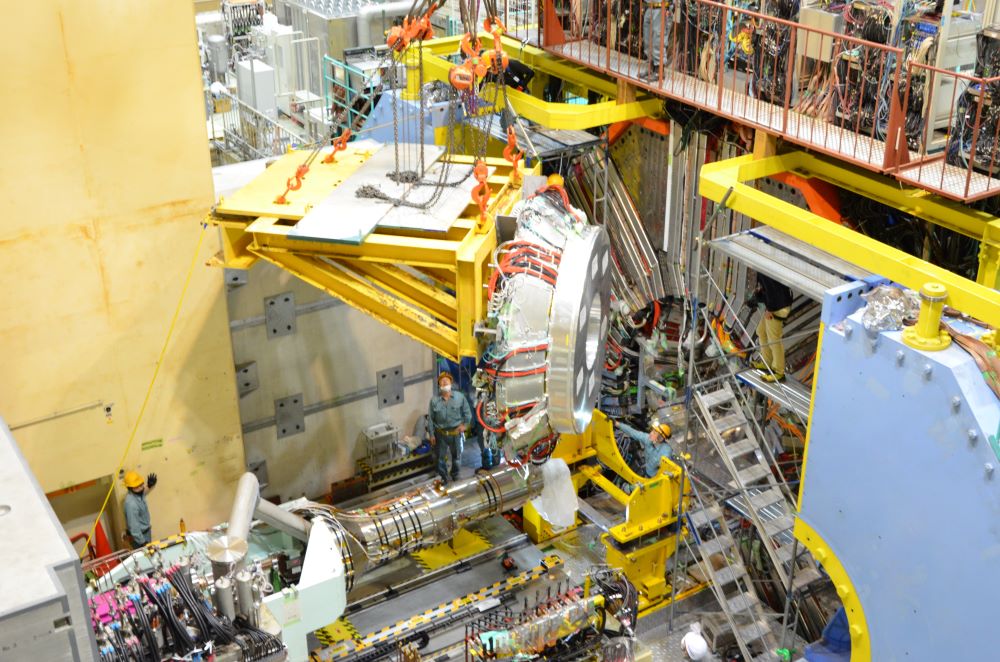
On April 26th, the "end cap" of the detector was removed using a large crane, to allow access to the inner detectors, including the VXD.©Belle II Collaboration
-
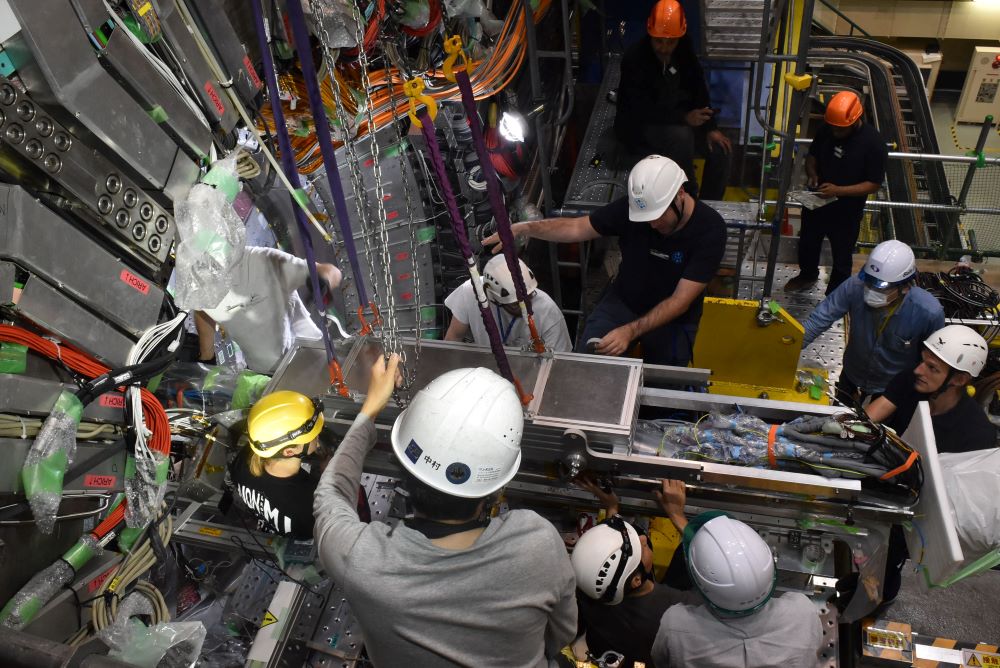
On May 10th, the old VXD was detached from the Belle II Detector body. ©Belle II Collaboration
-
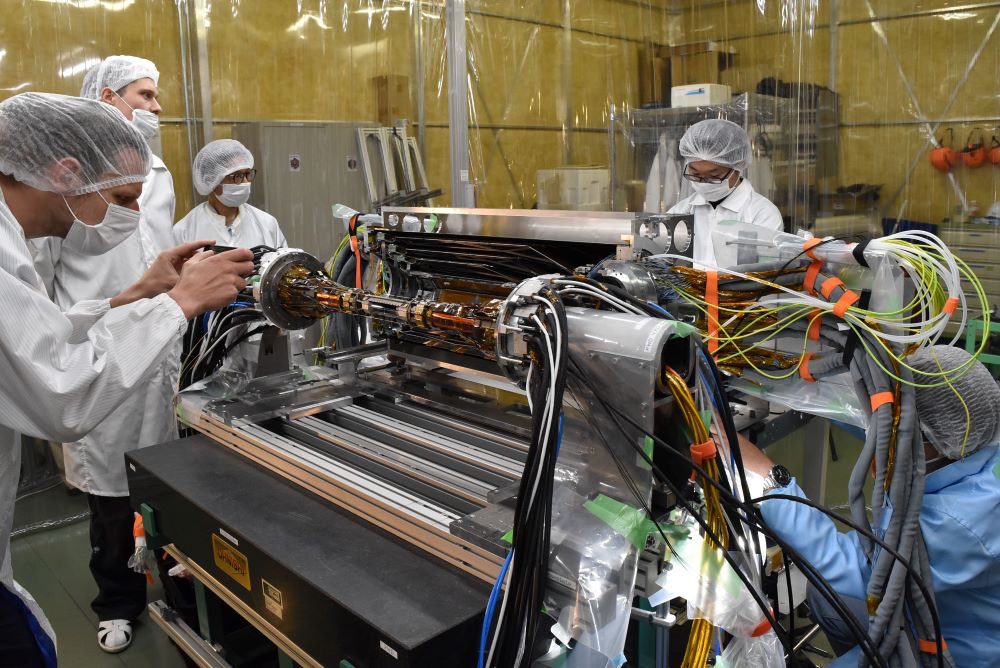
On May 17th, the pixel detector and silicon vertex detector were carefully separated from the Vertex Detector Assembly. ©Belle II Collaboration
-
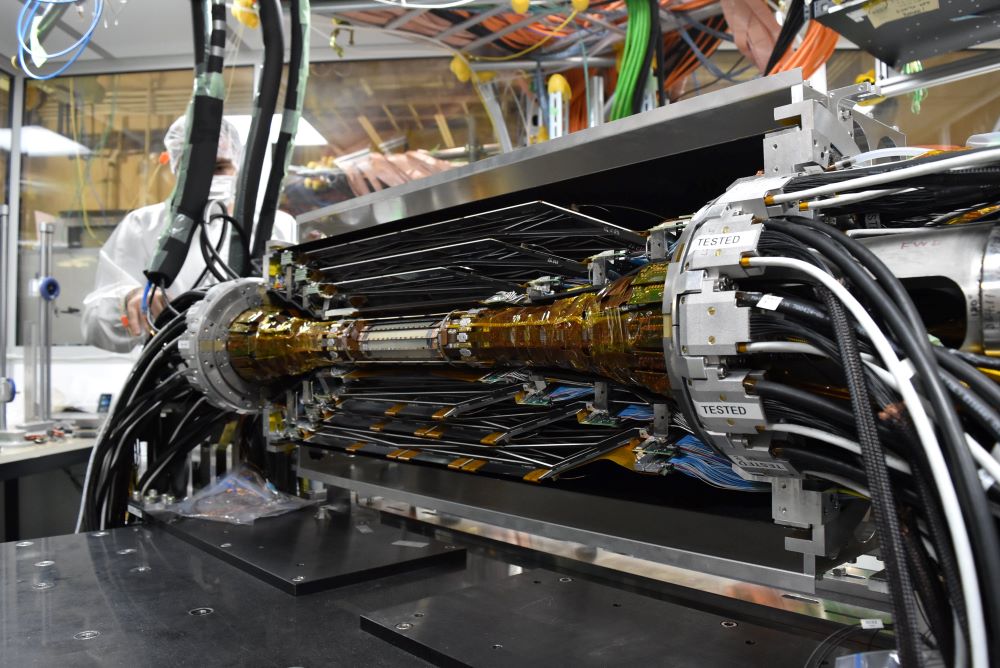
On June 21st, after attaching the new pixel detector and silicon vertex detector to the beam pipe, various tests for functionality and the installation of the new shielding structures were carried out. ©Belle II Collaboration
-
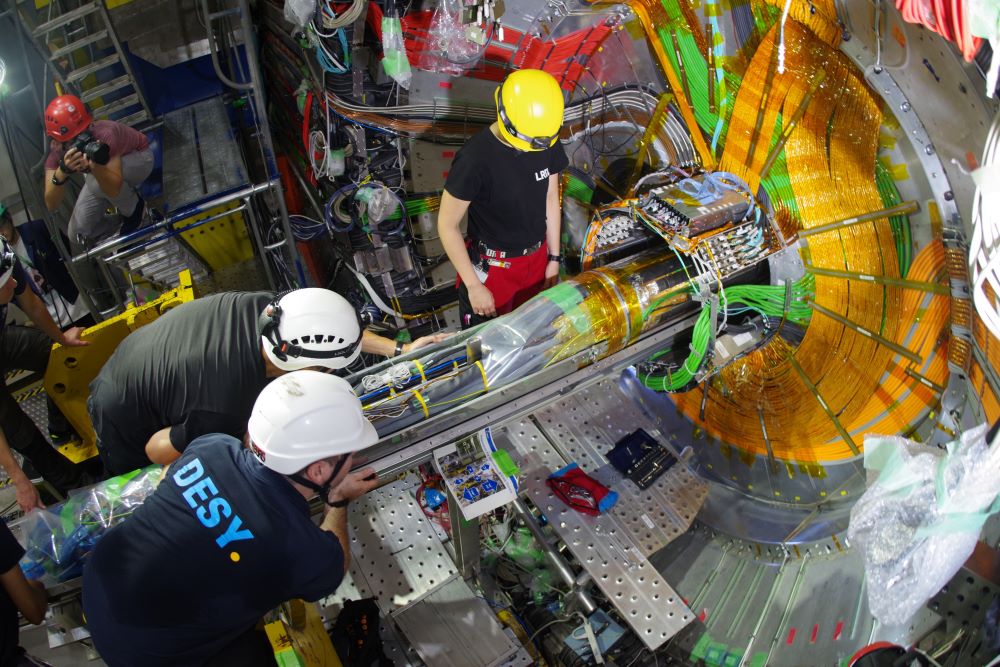
On July 28th, the new vertex detector was taken from the clean room, and moved next to the Belle II detector using a large crane. It was then manually inserted and secured into the Belle II Detector, completing the installation. ©Belle II Collaboration
On October 1st, the first commissioning run with the new vertex detector was completed, recording data from cosmic rays interacting with the detector.
-
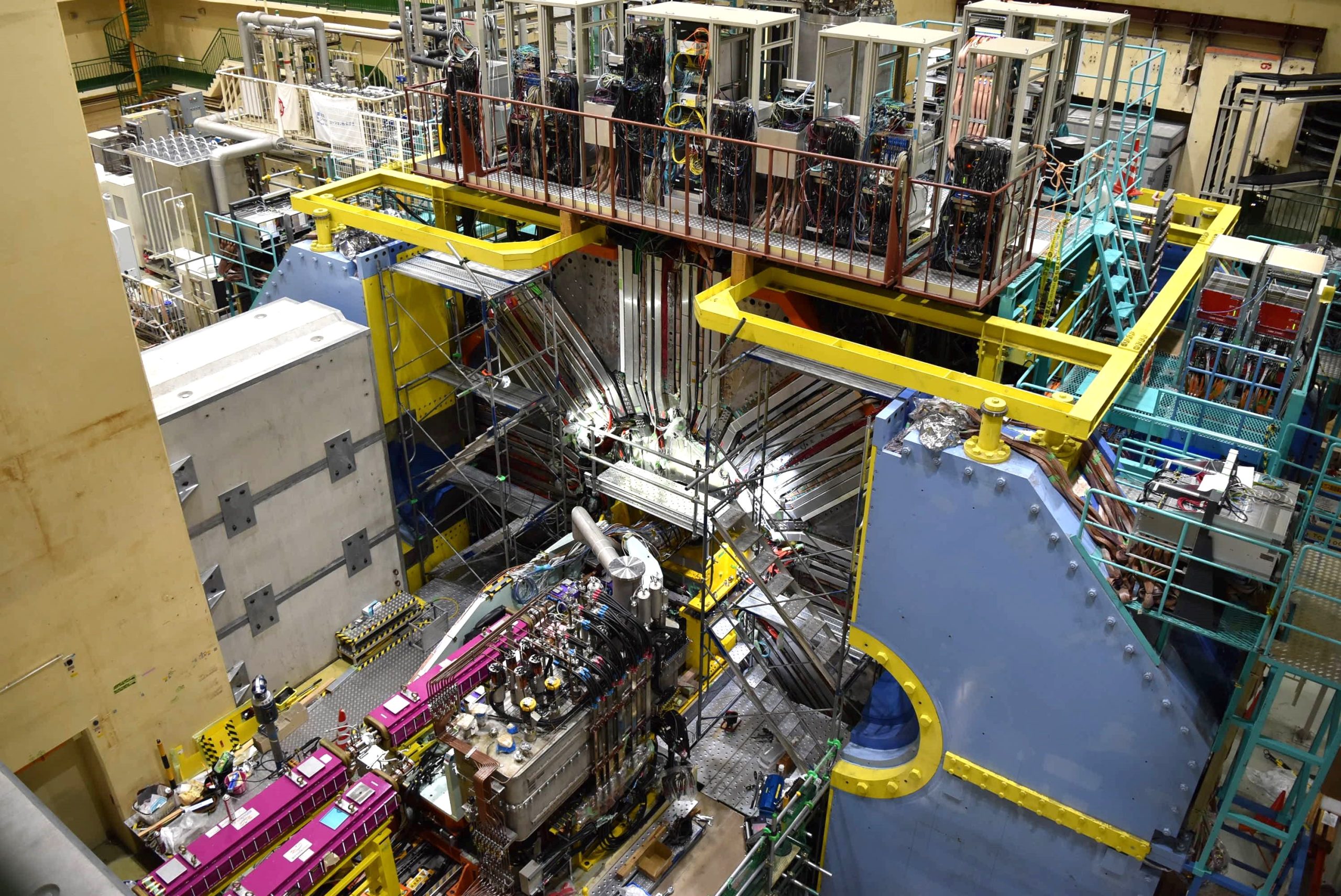
On October 23rd, we inserted the superconductive final-focus quadrupole magnets (QCS) into the Belle II detector and completed the connection between the beam pipe in the vertex detector and the beam pipe in the QCS. On October 26th, we also attached the aerogel RICH counter and electromagnetic calorimeter. ©Belle II Collaboration
Long-term Research and Development of Procedures for Safe Replacement
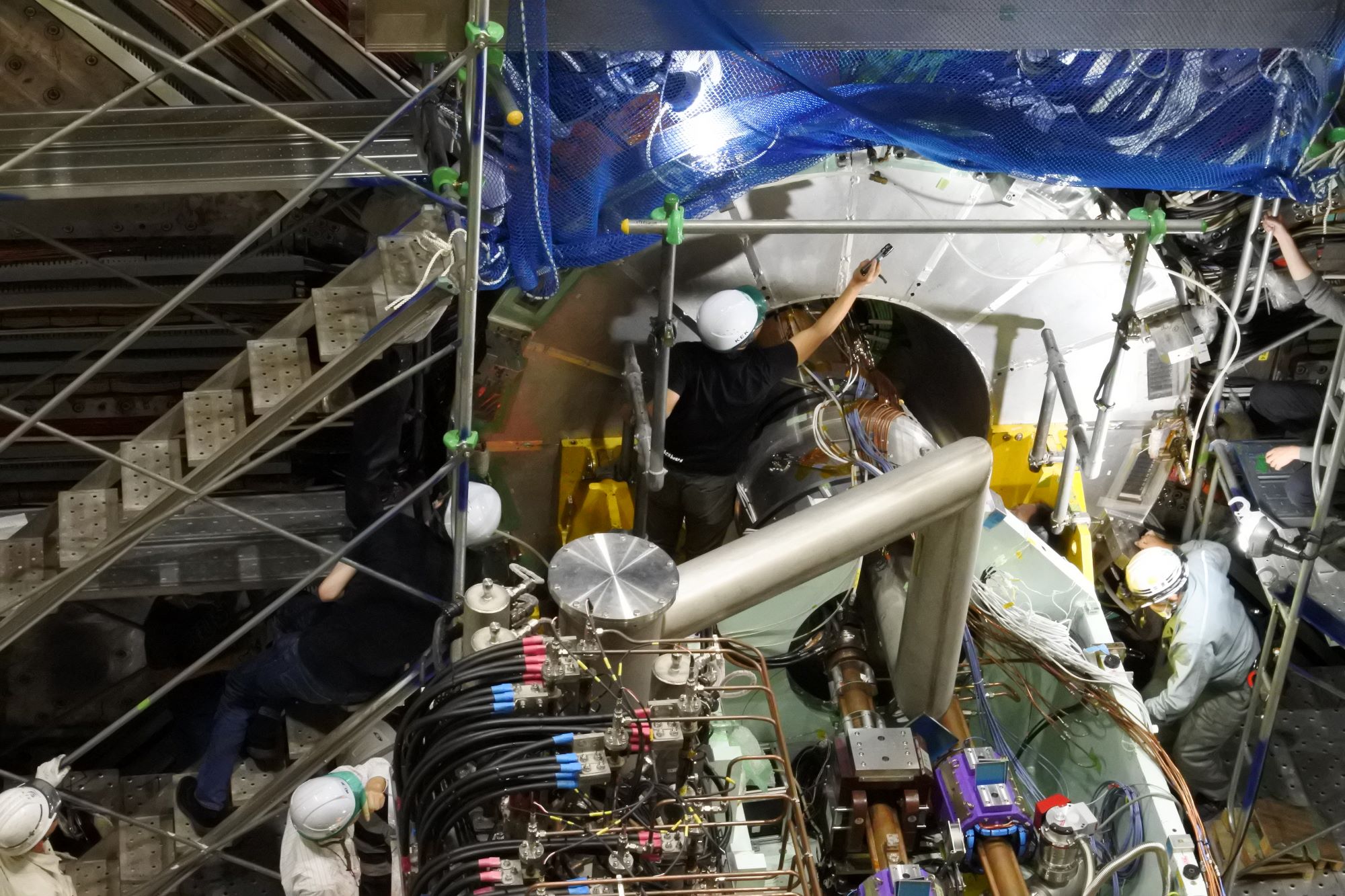
©Belle II Collaboration
Belle II Deputy Technical Coordinator, Dr. Katsuro Nakamura, reflected on the series of tasks for the replacement of the vertex detector:
“For the replacement of the vertex detector, we reused the Silicon Vertex Detector that had been used for Belle II’s first data taking period. It’s an extremely delicate device with many fragile cables and sensors. The process of extracting and disassembling the old vertex detector was an unprecedented challenge -failure could render the silicon vertex detector unusable and lead to significant project delays, so it had to be avoided. To ensure a reliable procedure for the extraction and the reinstallation, we conducted extensive research and development for the procedure over the past three years.
For the disassembly, we performed multiple iterations of investigations with test devices to figure out the tools and jigs that would be necessary and the procedures that would ensure the utmost safety. At each stage, verification points were precisely documented and used to produce a manual to ensure that safe and reproducible operations could be carried out, even a year later. While the procedures were primarily developed at KEK, they had to work for our overseas collaborators as well. Normally, we would have held on-site face-to-face verification meetings including demonstrations, but due to the COVID-19 pandemic, overseas experts couldn’t travel to Japan. As a result, we had to invest significant time in finalizing the procedures via video conferences demonstrating the procedures.
For the replacement, we carried out the extraction, disassembly, reassembly, reinstallation, and commissioning of the vertex detector over a span of approximately five months. Throughout this period, we proceeded with utmost care, never letting our guard down, and diligently carried out the entire sequence of tasks that we had developed. Our long-term research and development of these procedures ensured the safety and smooth execution of the entire project.”
The second beam operation for Belle II, known as Run2, is scheduled to start in January 2024. In preparation for Run2, the system test of the aerogel RICH counter and electromagnetic calorimeter, followed by the closure of the outer magnet yoke of Belle II to make the detector ready for recording new data.
Dr. Yutaka Ushiroda, Project Manager of Belle II Experiment, said, “Toward the completion of the installation, there were numerous unforeseen challenges that we had to overcome. I am delighted that the new vertex detector will now allow us to resume our operation without significant concern. We will continue our preparations diligently and look forward to restarting.”

